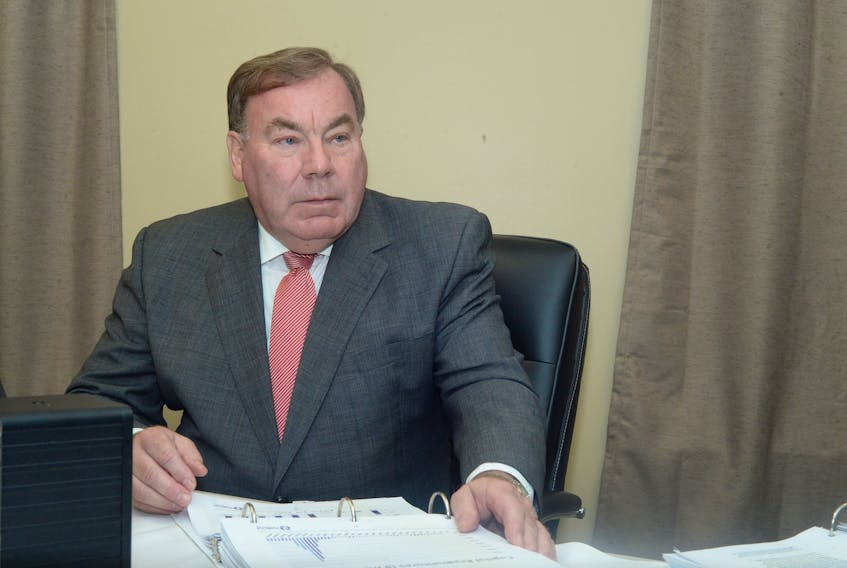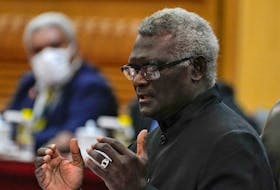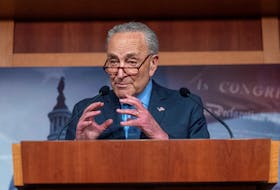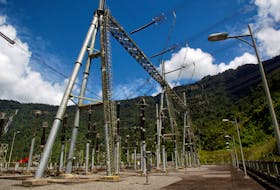ST. JOHN'S, N.L. — Executive paydays at Nalcor Energy grew in 2018, with performance bonuses bumping pay even higher.
The executive team of CEO Stan Marshall, Gilbert Bennett, Derrick Sturge, Jim Keating, and John MacIssac (before he left the corporation in February) took home a combined $312,600 in performance bonuses in 2018, according to the province’s sunshine list, released earlier this month.
The bonus amounts are less than in 2017, when the executive bonuses total.ed $381,500. Almost half of the 2017 figure comes from Marshall’s bonus of $157,500.
In a statement, Nalcor spokesperson Deanne Fisher said performance bonuses for executives are standard fare in the utility industry to incentivize good performance.

“Pay for performance for executive and senior management is designed to drive employees towards achieving specific milestones such as construction completion, reliability, safety, cost control etc.,” Fisher wrote in a statement.
“These milestones are set, evaluated and approved by the board of directors to ensure pay is linked to organizational performance and achievement of the most important corporate goals.”
The Muskrat Falls project, labelled a boondoggle by Marshall in 2017, is expected to cost the province $12.7 billion, up from the original $6.2 billion estimate. First power from Muskrat Falls was originally due to flow in mid-2017 and is now expected later this year.
On top of executive bonuses, of the 844 Nalcor employees who made the 2018 sunshine list, $3.3 million was paid out in performance bonuses for other employees.
Des Sullivan, a member of the Concerned Citizens Coalition at the Muskrat Falls Inquiry, says he finds it hard to believe the performance of Nalcor justifies the bonuses paid out by the Crown corporation.
“What is the purpose of the bonus structure? The typical corporate view of bonuses is that they are a reward for extraordinary performance in your role. They are not givens, they’re not to be awarded no matter how well or how poorly you perform,” said Sullivan.
“I think a good board of directors will do a proper assessment of the contribution of these senior executives and truly assess whether the individuals justify those increases. I think a board of directors has to look at the overall performance of the company.”
Fisher says Nalcor has taken steps to curb salary costs.
“In 2018, Nalcor completed a salary review which tightened 50% of non-union pay scales and the company has given employees no cost of living increases in four years, with no increase for union employees last year,” wrote Fisher.
“We have taken significant efforts to responsibly manage costs, and will continue to look for ways to do more.”
In her testimony at the Muskrat Falls Inquiry, deputy minister of finance Denise Hanrahan presented numbers detailing the tax base of the province, the people who will ultimately foot the bill for the project.
According to Hanrahan’s presentation, roughly 425,000 people filed a tax return in the province in 2016, with 277,000 people – 53 per cent of the population – contributing to the $1.6 billion in income tax revenue of the province.
Of those, 51 per cent of tax filers had taxable income of $30,000 or less and paid about four per cent of all income tax in the province. The other 49 per cent of tax filers paid 96 per cent of all income tax in the province.
According to Hanrahan, seven per cent of taxpayers have a taxable income over $100,000, while 20 per cent of the taxpaying population have taxable income of less than $10,000.
Twitter: @DavidMaherNL
RELATED








